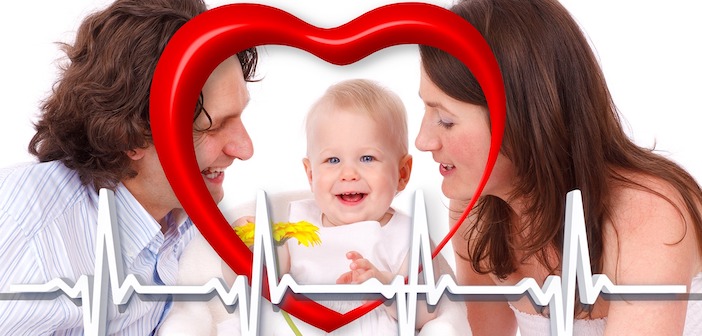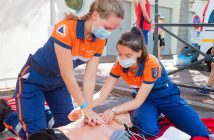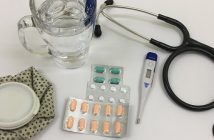No one wants to think about their kids getting hurt, but when it comes to emergency first aid, it’s always better to know it and never have to use it, than to not know what to do in a crisis.
As a General Practioner Dr. Irena Mehandjiska Shumanska feels passionate about educating parents on the importance of first aid training. “In case of any emergency [the parents]need to know the skills for first aid. Ambulances and rescue might not always be able to arrive quickly in every case so it’s important to know the basics. The first few minutes are crucial and can mean the difference between life and death”
With another one of IMC’s first aid training classes coming up on October 26, Dr. Mehandjiska Shumanska shows beijingkids a few of the most common emergency care techniques that every parent must know.
Choking
Heimlich Maneuver on an Infant
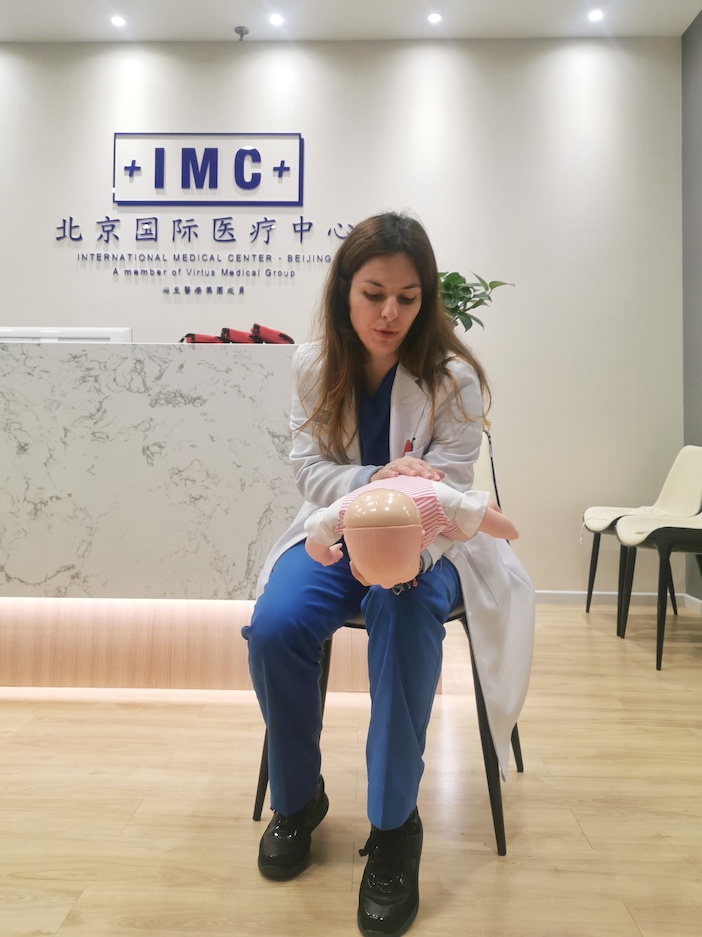
Place the infant face down across your forearm (resting your forearm on your leg) and support the infant’s head with your hand. Give five forceful blows to the back with the heel of your hand.
Turn the infant over and support the infant’s head with your hand. Place two fingers just below the nipples in the center of the chest and give five forceful thrusts.
Continue alternating sides until the object is dislodged or until emergency services arrive.
Heimlich Maneuver on a Toddler or Adult
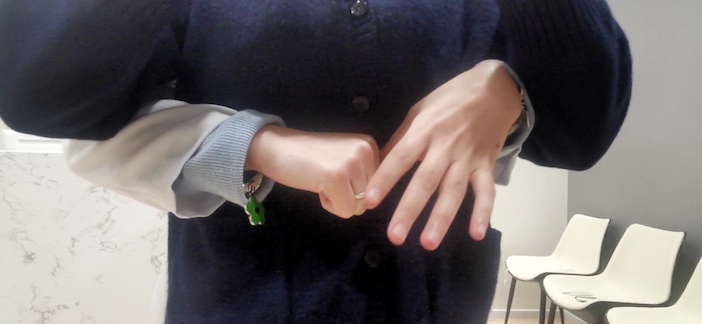
With the child in the upright position, bend the child forward while holding the child with one hand at the waist.
Place your fist right above the child’s bellybutton.
Then use fast, short motions to thrust inward and upward giving 5 quick abdominal thrusts – in and up. Don’t lift the child off the floor while doing this.
Fall Injuries
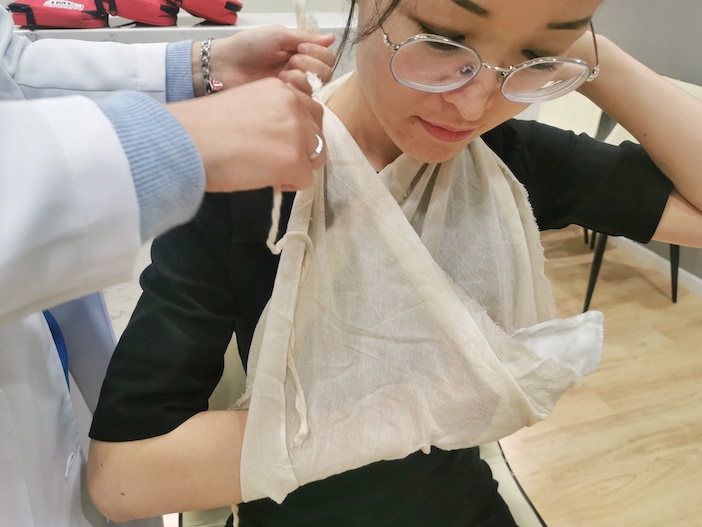
One of the most common injuries among young children, especially in those who play sports, are arm injuries. It’s important to know the basics of bandaging an injured arm to prevent further damage on the way to seek professional assistance. In this case, Dr. Mehandjiska Shumanska recommends the RICER method.
R.I.C.E.R Method: (Rest, Ice, Compression, Elevation, Referral)
Rest: It is suggested that you take a break from the activity that caused the injury in order to give the injury time to heal.
Ice: The injury should be iced on and off in 20 minute intervals, avoiding direct contact of the ice to the skin.
Compression: Bandaging the injury will compress it, and prevent any further bleeding or swelling to occur.
Elevation: Elevating the injury above your heart while you are resting will aid in the reduction of swelling.
Referral: Referral to an appropriate medical professional for guidance and management.
Check for circulation after the bandage is on by squeezing the tip of the finger. If color doesn’t return in 2 seconds, adjust the sling to allow for better circulation.
Electric Shock
Unplug the source of the electricity.
Remove the child from the source. Be sure you’re grounded – standing on a non-conductive source such as wood, dry paper, or rubber. Separate the child with something non-conductive.
Check for breathing and pulse. If needed, start CPR.
When breathing returns to normal, put them in recovery position.
CPR
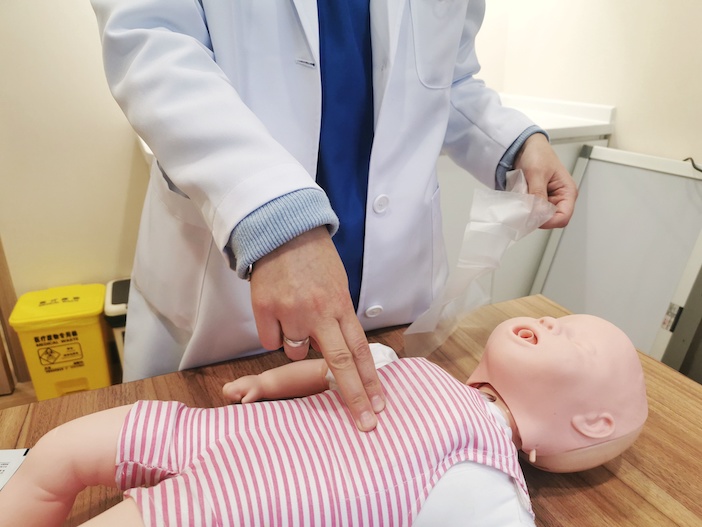
Shout and gently tap the child on the shoulder. If there is no response and they are not breathing or not breathing normally, position the infant on his or her back and begin CPR.
Give 30 gentle chest compressions at the rate of 100 compressions/minute. Use two or three fingers in the center of the chest just below the nipples.
Open the airway using a head tilt, lifting the chin. Do not tilt the head too far back.
If the baby is not breathing or not breathing normally, cover the baby’s mouth and nose with your mouth and give 2 gentle breaths. Each breath should be 1 second long. You should see the baby’s chest rise with each breath.
Place the child in recovery position.
Recovery position
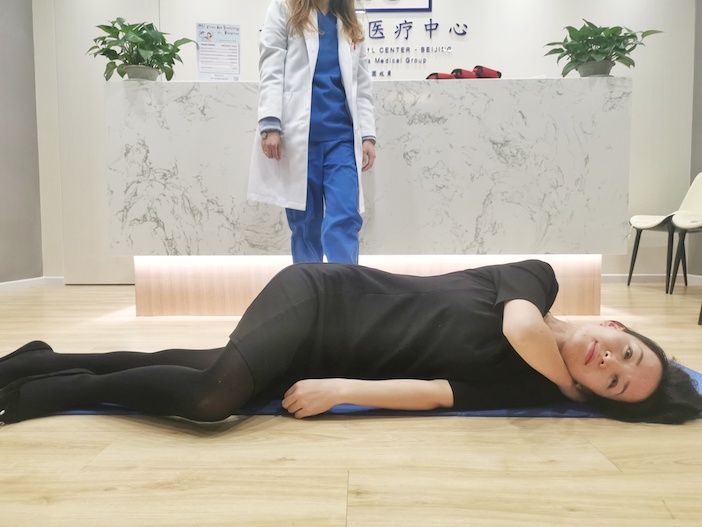
Put the person in recovery piston while waiting for emergency services to arrive.
IMC covers all these and more in their three hour first aid training.
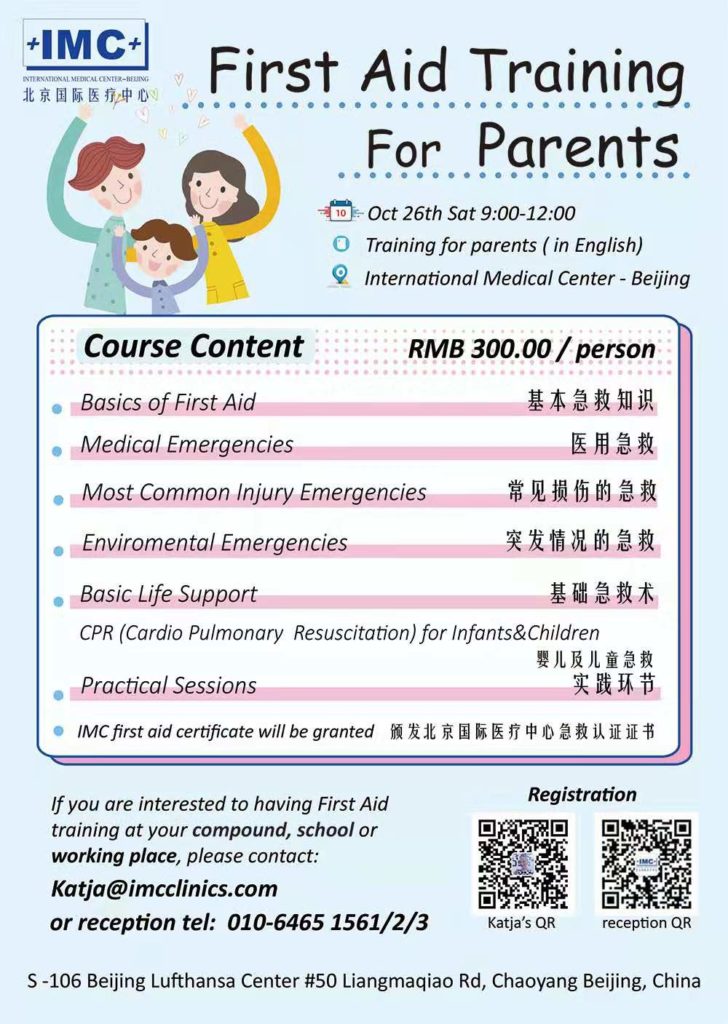
First Aid Training for Parents, Oct 26
Adults. 9am-12pm. International Medical Clinic – Beijing (IMC)
S-106 Beijing Lufthansa Center 50 Liangmaqiao Lu, Chaoyang District, WeChat Katja Kinnunen (katjaelisabet), katja@imcclinics.com, 6465 1561
Photos: Mina Yan, pixabay

